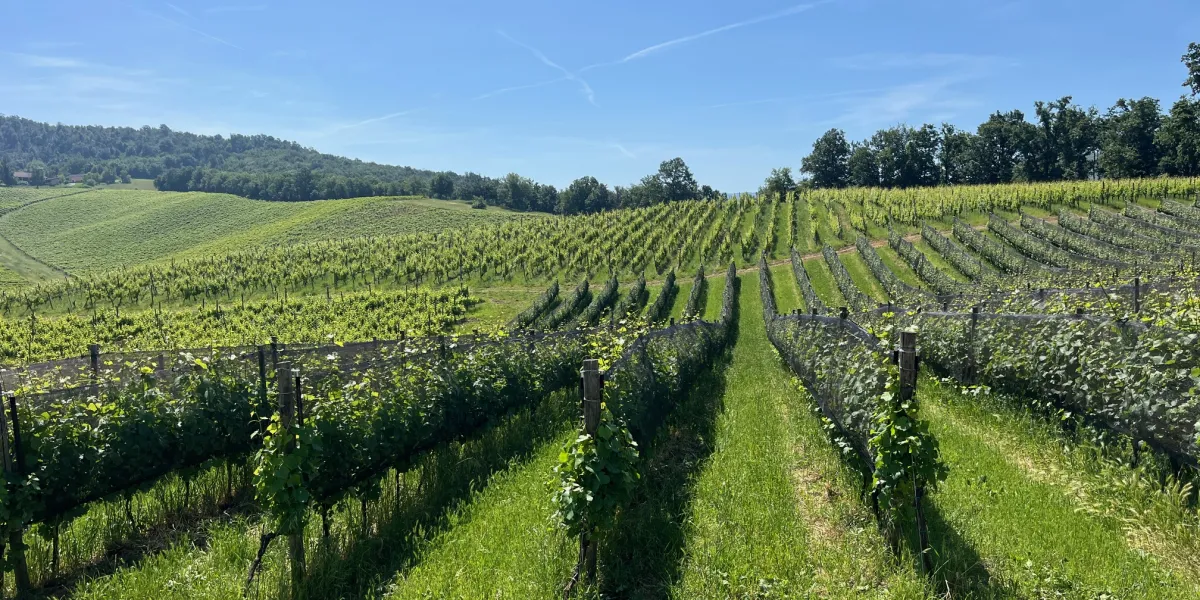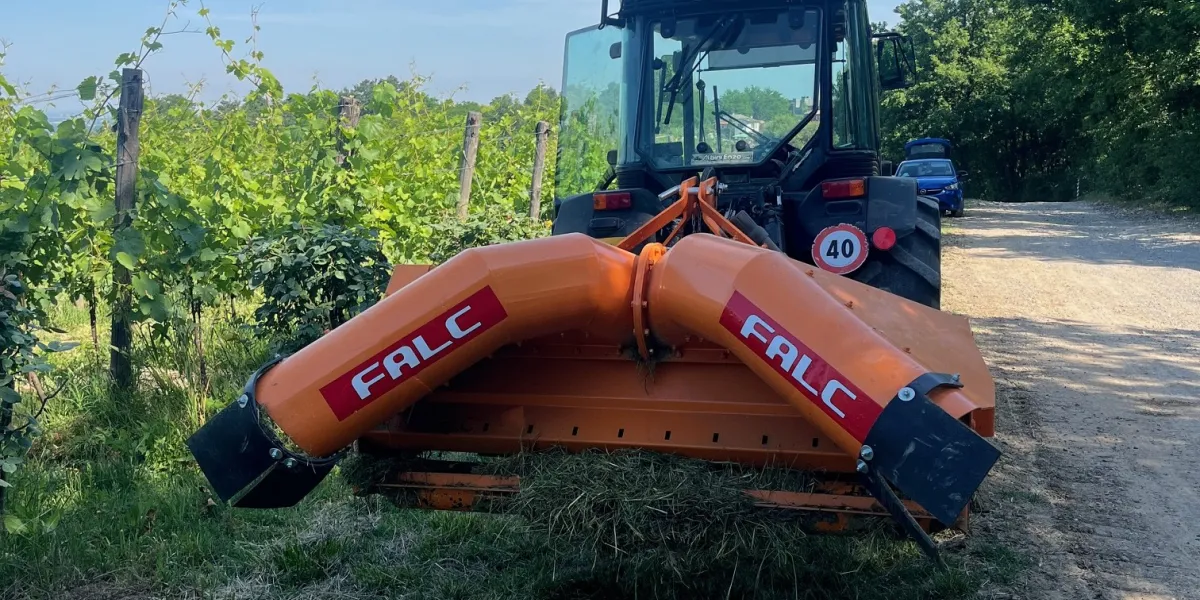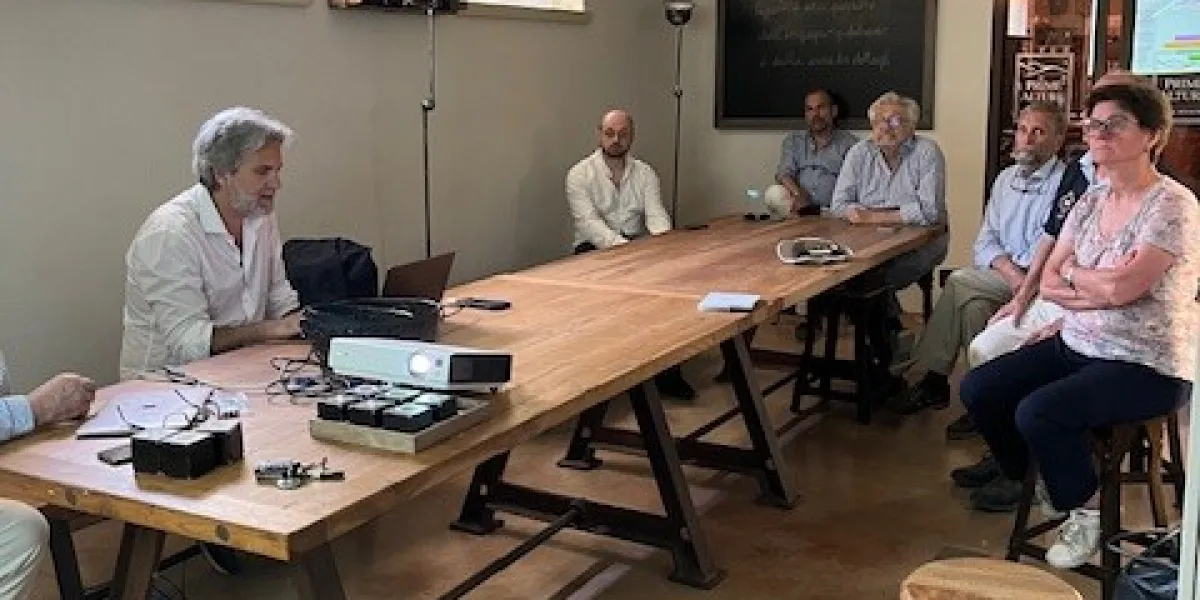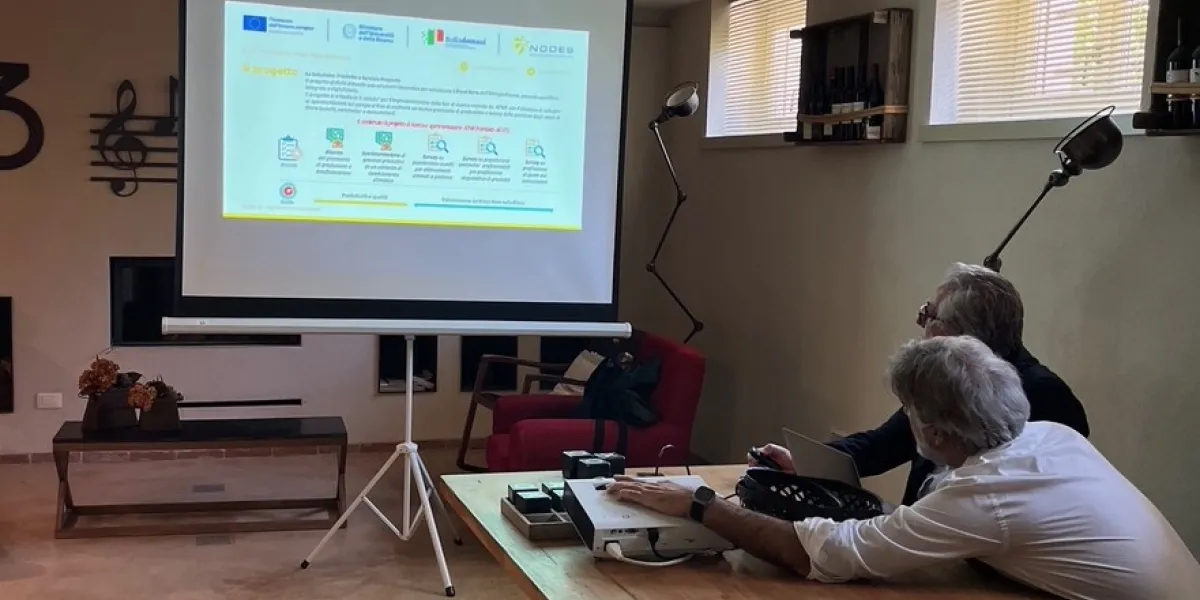Final Event for APNR: Agronomic Innovation and Market Strategies for Pinot Noir
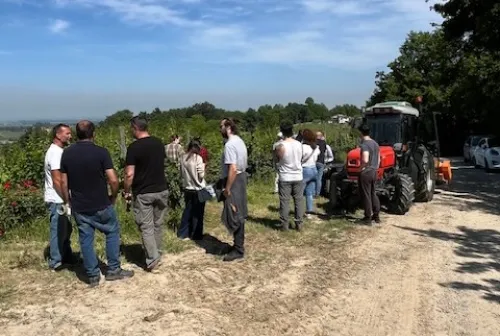
On 30 May, the final event of the APNR – Academy del Pinot Nero Research project was held at the Prime Alture agricultural company (lead partner), in collaboration with Geosmartcampus Srl. APNR is an industrial Proof of Concept funded under the Cascade Calls – Line A of the NODES – Nord Ovest Digitale e Sostenibile programme, aimed at developing innovative technologies and strategies to enhance the Pinot Noir supply chain in the Oltrepò Pavese region of northern Italy.
The project focused on two complementary areas: experimental fieldwork in the vineyard, with the installation of pilot systems, and market research to analyse consumer preferences and refine product positioning strategies.
Among the innovations tested in the vineyard, special attention was given to the use of inter-row mulching, an agronomic technique involving the autumn-winter sowing of temporary cover crops. These are later shredded and channelled beneath the vines using a dual-row mulching machine, creating a uniform organic layer. This practice significantly suppressed weed regrowth throughout the season without the need for further intervention, while repurposing plant residues from within the vineyard ecosystem itself—an example of circular sustainability.
A second pilot involved the use of shade nets, designed to reduce incident solar radiation by 20% to 70%. The results were highly promising: the nets helped prevent sunburn on grape clusters and improved overall agronomic performance. Analytical data recorded slightly higher yields (127 kg per row with nets vs. 124 kg without; 2.12 kg per vine with nets vs. 1.87 kg without), better fruit distribution, and healthier vines with minimal fungal disease. Labour was also optimised, as no de-shooting was required and harvesting was easier thanks to the clear and compact cluster arrangement.
On the industrial research side, the APNR team conducted a two-phase market study. The qualitative phase explored emotional responses, perceptions, and narratives surrounding Pinot Noir, gathering insights from sommeliers, chefs, and wine enthusiasts to guide marketing strategies and uncover new consumption occasions. The subsequent quantitative phase validated these insights across a representative sample of wine consumers, identifying high-potential target groups and effective communication strategies to attract and retain new audiences.
APNR has served as a practical example of how combining field-based innovation with market intelligence can produce tangible benefits for wine producers, enabling a shift toward more sustainable, competitive, and consumer-conscious viticulture.

